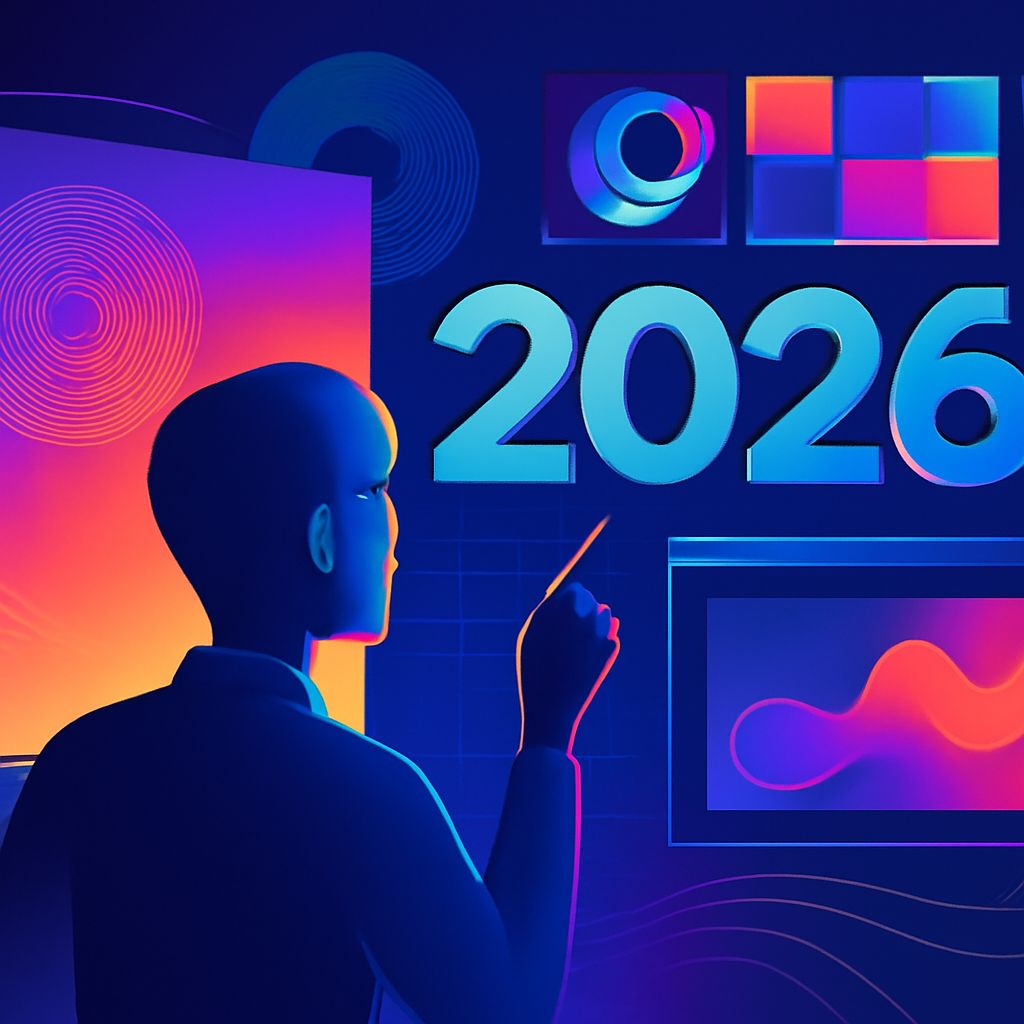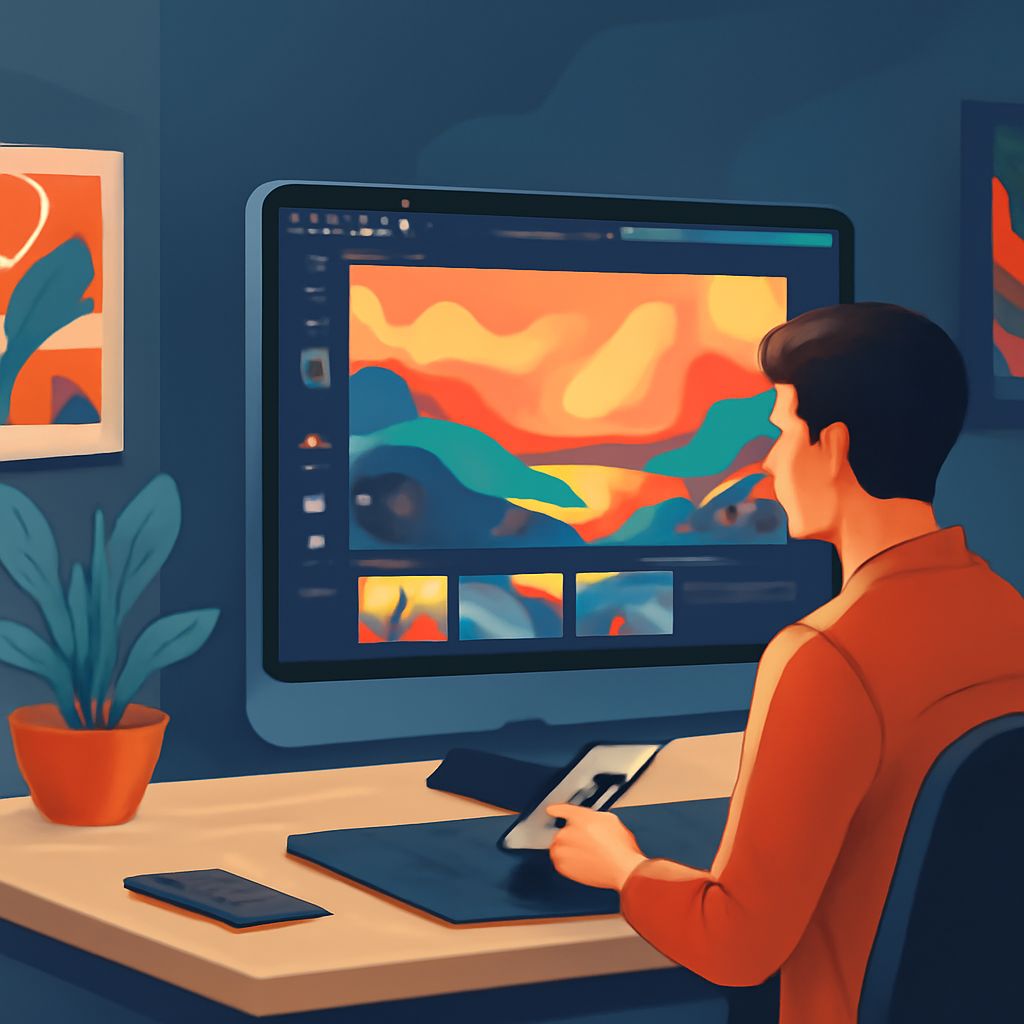Dive into the Future: Upcoming Graphic Design Trends for 2026
As we approach the mid-2020s, the world of graphic design is evolving at an unprecedented pace. With technology advancing and consumer expectations shifting, designers are compelled to innovate continually. This article explores the anticipated trends in graphic design for 2026, providing insights into how creatives can adapt and thrive in this quickly changing landscape.
The Rise of Augmented and Virtual Reality
Augmented Reality (AR) and Virtual Reality (VR) have made significant strides in recent years, and their impact on graphic design is set to grow. By 2026, we can expect a surge in immersive design experiences that blend the physical and digital realms. Designers will need to consider how their creations translate into these environments.
Key Considerations for AR and VR Design:
- Interaction Design: Designers will focus on creating intuitive user interfaces that enhance the user experience in both AR and VR.
- 3D Models: A greater emphasis will be placed on 3D modeling and animation, as more brands look to engage consumers through interactive visuals.
- Accessibility: Ensuring that AR/VR experiences are accessible to all users, including those with disabilities, will become a central tenet of design.
Sustainability in Design
As environmental concerns continue to rise, sustainability will dominate graphic design strategies in 2026. Designers will increasingly prioritize eco-friendly materials, processes, and practices.
Ways Designers Can Incorporate Sustainability:
- Eco-friendly Materials: Adopting biodegradable or recyclable materials for print designs.
- Digital First: Minimizing print products by emphasizing digital formats to reduce waste.
- Design for Longevity: Creating designs that are timeless and won’t quickly go out of style, reducing the need for frequent redesigns.
Bold Typography and Experimental Fonts
Typography has always been a crucial aspect of graphic design, and as we head toward 2026, bold and experimental font choices are expected to take center stage. Brands will leverage unique typography to create standout visual identities that resonate with audiences.
Emerging Typographic Trends:
- Custom Fonts: Increased demand for bespoke typography that reflects a brand’s unique voice.
- Variable Fonts: These allow for multiple styles within a single font file, enabling greater flexibility and creativity.
- 3D and Animated Typography: Moving beyond static text, designers will incorporate dynamic typography that enhances engagement.
Data Visualization and Infographics
In a world overwhelmed with information, presenting data clearly and attractively is crucial. Graphic designers will focus on innovative ways to visualize data, making complex information more digestible.
Effective Data Visualization Strategies:
- Storytelling: Using narrative techniques to guide viewers through the data, providing context and insight.
- Interactive Infographics: Allowing users to engage with data in meaningful ways through interactive elements.
- Minimalism: Emphasizing simplicity to avoid overwhelming audiences with cluttered visuals.
Color Trends and Palettes
Color is a fundamental aspect of design, influencing emotions and perceptions. In 2026, we expect to see a shift toward more vibrant, unexpected color palettes that challenge norms and enhance brand differentiation.
Predicted Color Trends:
- Maximalism: A move away from minimalistic palettes to bold, vibrant combinations that create strong visual statements.
- Neon and Pastel Combos: The juxtaposition of neon colors with soft pastels for a unique aesthetic.
- Natural Inspirations: Earthy tones reflecting the growing trend toward sustainability and organic aesthetics.
Inclusivity in Design
Inclusivity is no longer an option—it’s essential. As society becomes more aware of diverse identities and experiences, graphic design must reflect this inclusivity.
Implementing Inclusive Design Principles:
- Diverse Representation: Ensuring that visual content represents a wide range of cultures, abilities, and identities.
- Language Accessibility: Designing for multilingual audiences by incorporating various languages and cultural nuances.
- Usability Testing: Engaging diverse focus groups to ensure designs are accessible and relevant to all users.
The Blending of Digital and Traditional Techniques
In 2026, we anticipate a fusion of digital and traditional design techniques. Graphic designers will draw inspiration from hand-crafted art forms while leveraging digital tools to enhance their work.
Benefits of Combining Techniques:
- Unique Aesthetics: Merging traditional and digital mediums can create visually stunning and unique designs.
- Artistic Depth: Adding a tactile feel to digital designs through traditional methods can enhance viewer engagement.
- Innovation: This blending encourages experimentation, pushing the boundaries of conventional design.
Conclusion
As we look ahead to 2026, graphic design is set to undergo transformative changes that embrace technology, sustainability, and inclusivity. Designers who are willing to adapt and innovate will not only thrive in this environment but will also play a pivotal role in shaping the future of visual communication. By staying ahead of these trends and embracing new tools and strategies, graphic designers can create impactful work that resonates with audiences and stands the test of time.
FAQ
What are the key graphic design trends expected in 2026?
In 2026, expect to see a rise in immersive design experiences, bold typography, and sustainable design practices that prioritize eco-friendly materials and methods.
How will technology influence graphic design trends in 2026?
Technology will play a crucial role, with advancements in augmented reality (AR), virtual reality (VR), and artificial intelligence (AI) driving innovative design solutions and interactive experiences.
Will minimalism continue to be popular in graphic design by 2026?
While minimalism may still hold its ground, it is likely to evolve into more expressive forms that combine simplicity with vibrant colors and dynamic elements.
What role will sustainability play in graphic design trends for 2026?
Sustainability will be a major focus, with designers increasingly opting for sustainable materials, practices, and designs that promote environmental awareness.
How can businesses prepare for the graphic design trends of 2026?
Businesses should stay informed about emerging trends, invest in innovative design technologies, and consider collaborating with designers who prioritize sustainability and user experience.
Are there any specific color trends anticipated for 2026 in graphic design?
In 2026, expect to see a shift towards vibrant color palettes, with a mix of bold hues and earthy tones that reflect both creativity and sustainability.




